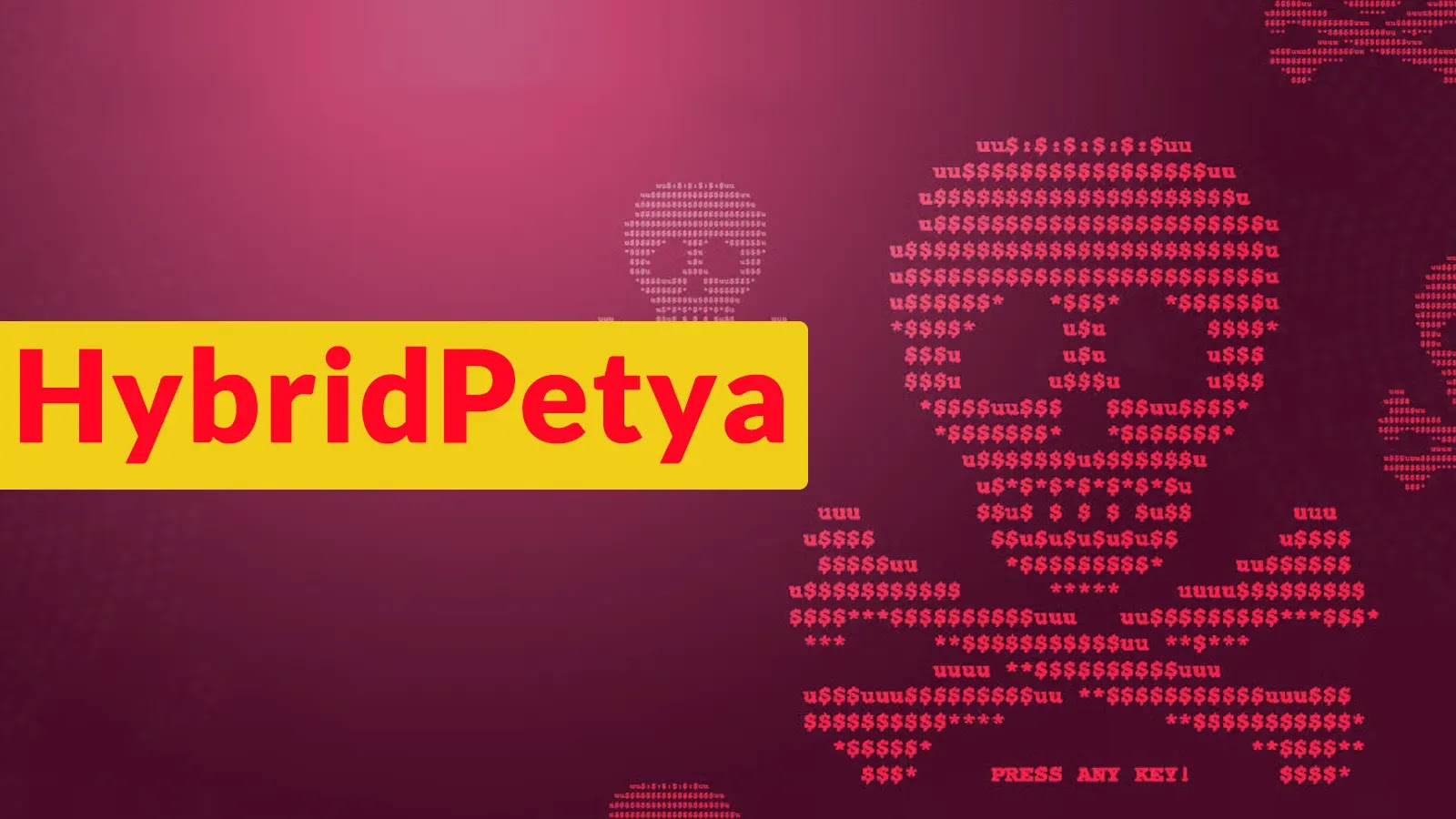
New HybridPetya Weaponizing UEFI Vulnerability to Bypass Secure Boot on Outdated Systems
The relentless evolution of cyber threats often brings echoes of past nightmares, but with a terrifying twist. In late July 2025, security researchers witnessed this firsthand as a new variant, dubbed HybridPetya, emerged on VirusTotal. While its filenames invoked the infamous Petya and NotPetya ransomware attacks, ESET analysts quickly identified a far more insidious capability: directly compromising the Unified Extensible Firmware Interface (UEFI) on vulnerable, outdated systems. This isn’t just another ransomware; it’s a fundamental attack on the very foundation of system security, bypassing even the most robust operating system protections.
The Genesis of HybridPetya: A UEFI-Targeting Menace
Unlike its destructive predecessors that primarily operated within the userland of an operating system, HybridPetya elevates its threat profile by attacking the UEFI firmware. This low-level software initializes hardware components and boots the operating system, making it a critical trust anchor. A compromise at this stage allows attackers to maintain persistence, evade detection, and execute malicious code before the operating system even loads, effectively nullifying defenses like Secure Boot.
The method of infection involves a specially crafted cloak.dat archive. While the full exploitation chain is still under detailed analysis, initial findings indicate HybridPetya leverages a previously undisclosed or unpatched UEFI vulnerability to write malicious code directly into the firmware. This signifies a profound shift in ransomware capabilities, moving beyond data encryption to system-level bricking or complete compromise.
Understanding UEFI and Secure Boot Bypass
UEFI is the successor to the traditional BIOS, offering enhanced features and a more modular architecture. One of its most significant security enhancements is Secure Boot. Secure Boot ensures that only trusted software (signed with approved cryptographic keys) can load during the boot process. This mechanism is designed to prevent malicious rootkits and bootkits from hijacking the operating system before it starts.
HybridPetya’s ability to weaponize a UEFI vulnerability directly bypasses Secure Boot. By manipulating the firmware itself, the malware can disable, modify, or circumvent Secure Boot checks, allowing its malicious components to load unimpeded. This is particularly concerning for outdated systems where firmware updates might be neglected or no longer provided by the manufacturer, leaving them permanently vulnerable to such low-level attacks.
The Critical Threat to Outdated Systems
The targeting of outdated systems by HybridPetya highlights a significant cybersecurity gap. Many organizations and individuals continue to operate hardware with legacy UEFI firmware that may contain unpatched vulnerabilities. Manufacturers often cease providing firmware updates for older models, creating an expanding attack surface that sophisticated threats like HybridPetya are now exploiting. An attack at this level can lead to:
- Permanent System Damage: Corrupted firmware can render a system unbootable or require complex, often hardware-level intervention to restore.
- Persistence and Evasion: Malware residing in UEFI firmware can survive operating system reinstallation and bypass traditional endpoint security solutions.
- Data Exfiltration: With full control over the system from the earliest boot stages, attackers can exfiltrate sensitive data before any protective measures are active.
Remediation Actions and Protective Measures
Given the severity of HybridPetya’s capabilities, immediate and comprehensive action is required, especially for systems running older hardware. Organizations and users must consider the following:
- Prioritize Firmware Updates: Regularly check your hardware vendor’s support pages for the latest UEFI/BIOS firmware updates. Even if your system is older, some vendors might release critical security patches. Always verify the integrity of firmware updates before applying them.
- Implement Secure Boot: Ensure Secure Boot is enabled on all systems. While HybridPetya aims to bypass it, Secure Boot remains a crucial defense against many other boot-level threats.
- System Inventory and Lifecycle Management: Maintain an accurate inventory of all hardware, noting end-of-life dates for firmware support. Plan for timely hardware refreshes to ensure systems are running on supported and secure platforms.
- Endpoint Detection and Response (EDR) with Firmware Visibility: Deploy EDR solutions that offer insights into firmware integrity and behavior. Some advanced solutions can detect unauthorized modifications to UEFI.
- Network Segmentation: Isolate critical systems and implement robust network segmentation to contain potential breaches and prevent the lateral movement of threats like HybridPetya.
- Employee Training: Educate users about the dangers of phishing and social engineering, as these are often initial vectors for ransomware and other malware delivery.
- Regular Backups: Maintain comprehensive and tested backups of all critical data. Ensure backups are stored offline or in immutable storage to prevent compromise by ransomware.
Currently, discussions around specific CVEs related to HybridPetya’s UEFI exploitation are ongoing within the security community. As more details emerge from ESET’s analysis, relevant CVEs will be properly identified and documented. For general UEFI vulnerabilities, you can often find information on resources like CVE-2023-XXXXX (placeholder for future specific CVEs).
Tools for Detection and Mitigation
Protecting against low-level firmware attacks requires specialized tools and vigilant monitoring. Here are some categories of tools that can assist:
| Tool Name/Category | Purpose | Link |
|---|---|---|
| UEFI Firmware Scanners (e.g., CHIPSEC) | Analyzes UEFI firmware for vulnerabilities, misconfigurations, and integrity issues. | https://github.com/chipsec/chipsec |
| Advanced EDR/XDR Solutions | Monitors system activity, including boot processes, for suspicious behavior and provides firmware integrity checks. | (Vendor-specific: CrowdStrike, SentinelOne, Microsoft Defender XDR, etc.) |
| Hardware Security Modules (HSMs) / TPMs | Provide a hardware-rooted chain of trust for secure boot and cryptographic operations, enhancing system integrity. | (Integrated into modern hardware platforms) |
| Endpoint Patch Management Solutions | Automates and streamlines the deployment of system and firmware updates. | (Vendor-specific: SCCM, Tanium, Ivanti, etc.) |
Conclusion: The Escalating Threat to Firmware Integrity
The emergence of HybridPetya marks a significant and concerning escalation in the threat landscape. By directly targeting UEFI firmware, attackers are probing the deepest layers of system security, seeking to bypass established defenses like Secure Boot. This emphasizes the critical importance of maintaining up-to-date firmware, proactively addressing hardware lifecycle management, and employing advanced security solutions capable of monitoring and securing the entire boot chain. Protecting against HybridPetya and similar sophisticated threats demands a multi-layered approach, a commitment to continuous vigilance, and an understanding that the battle for cybersecurity is increasingly being fought at the firmware level.





